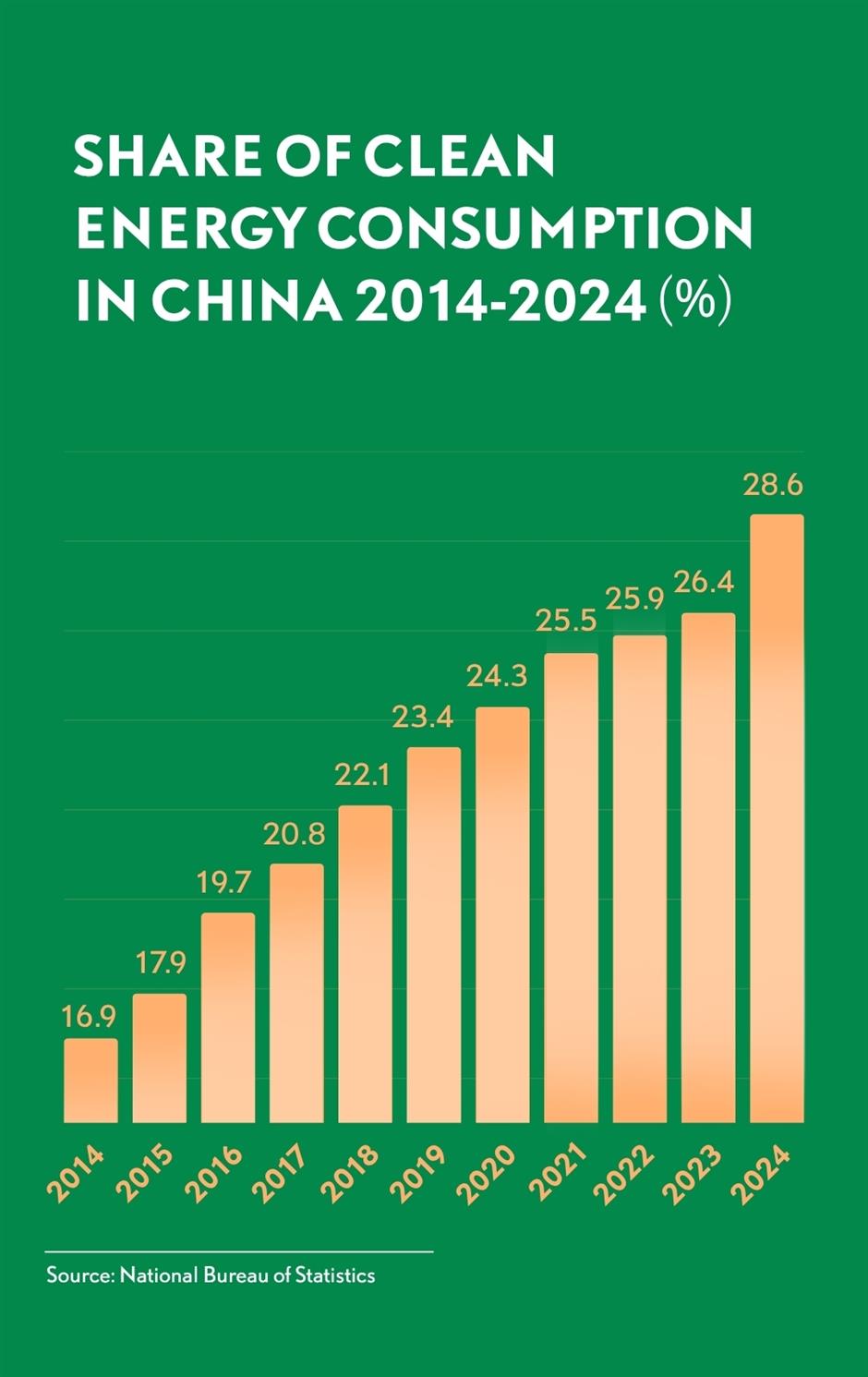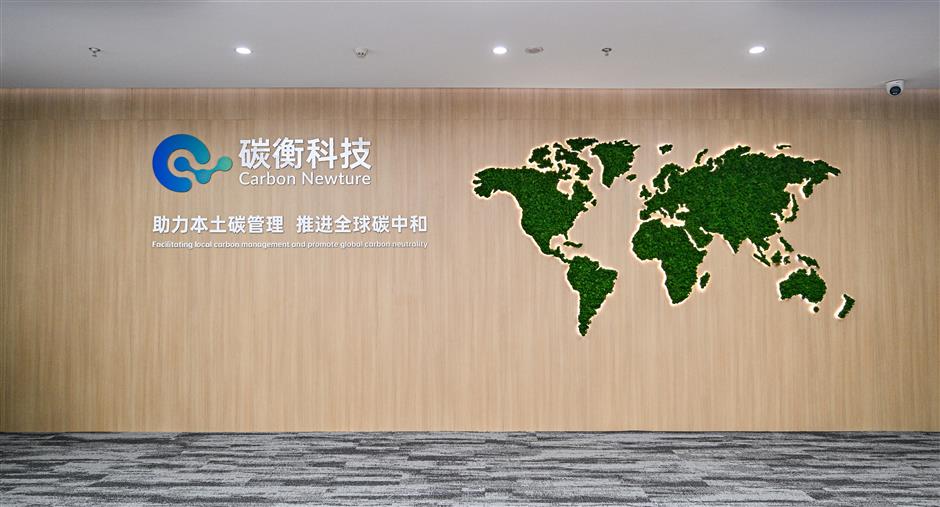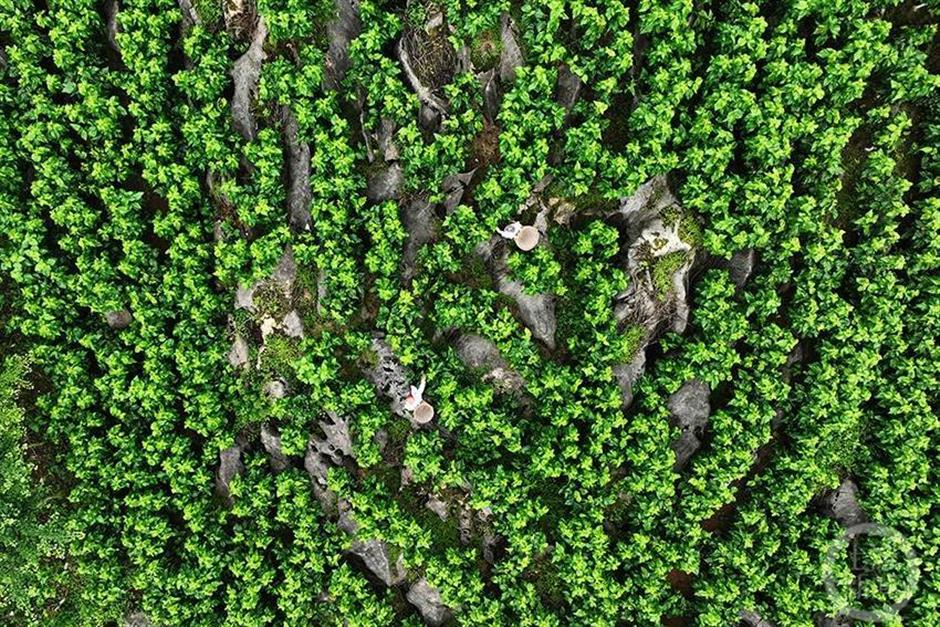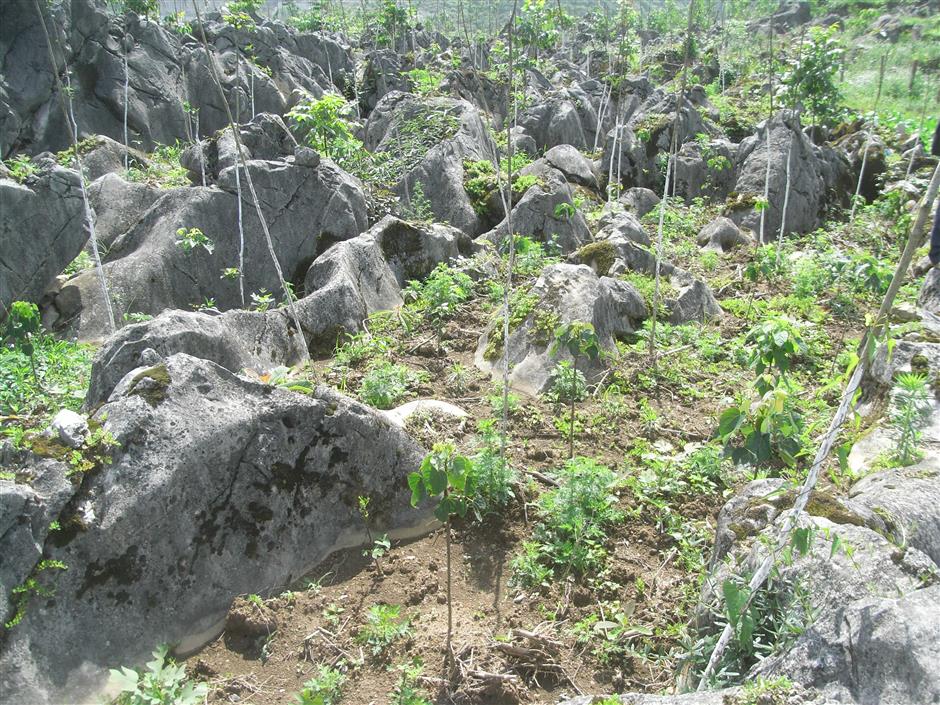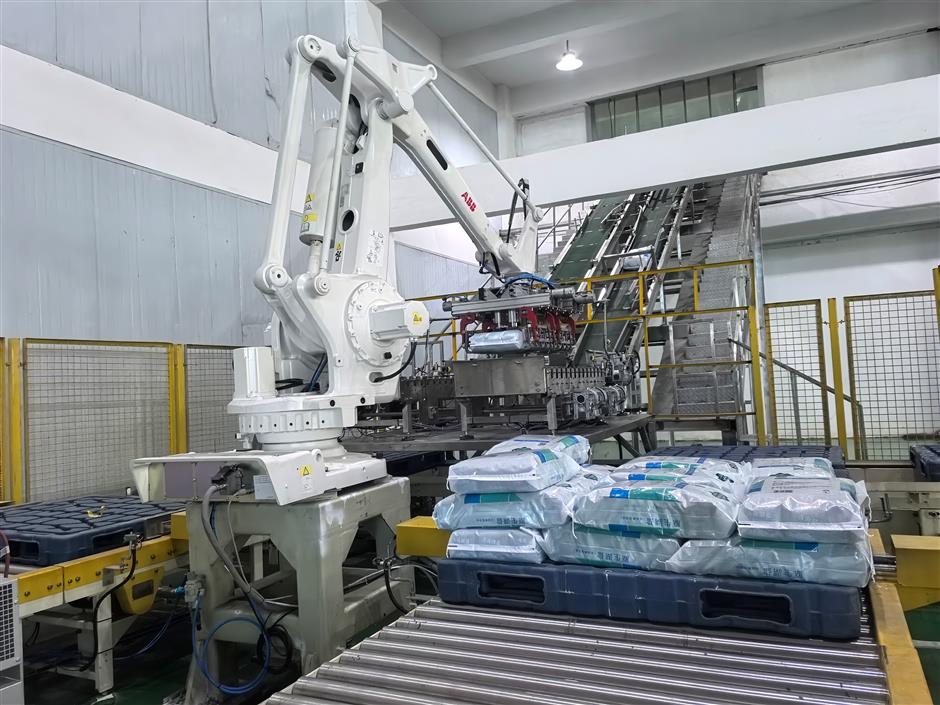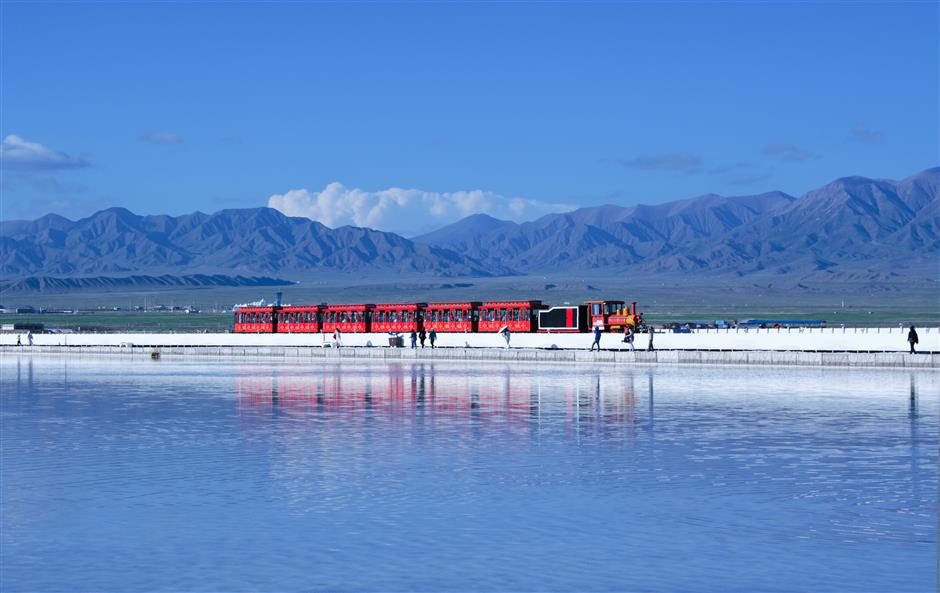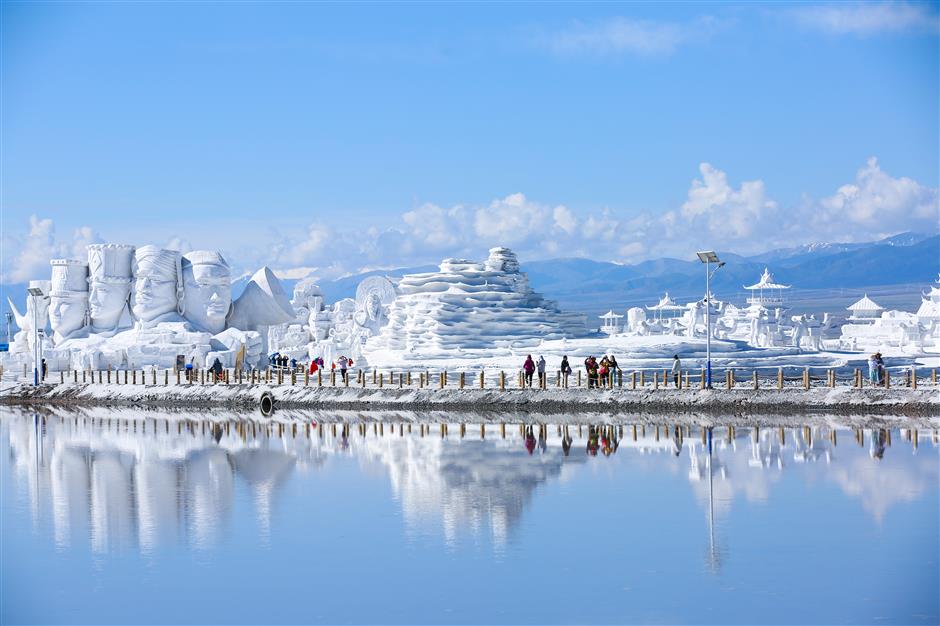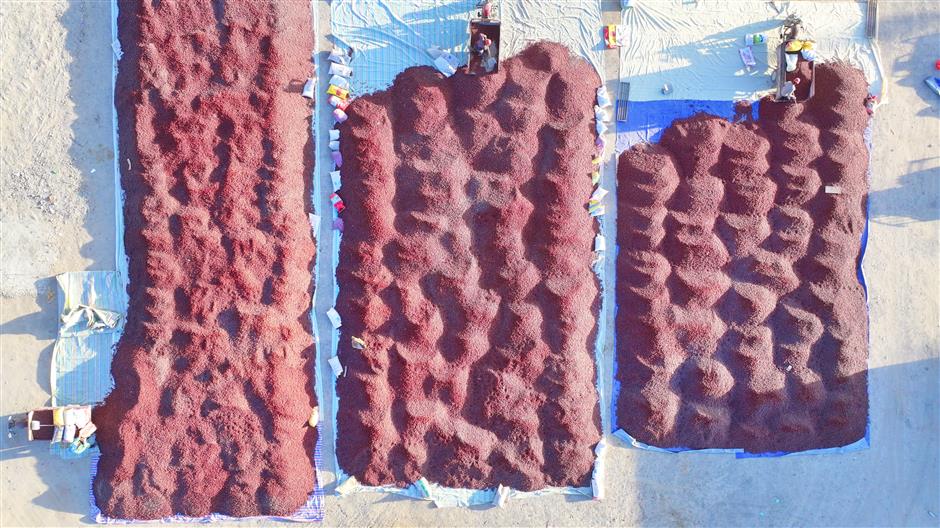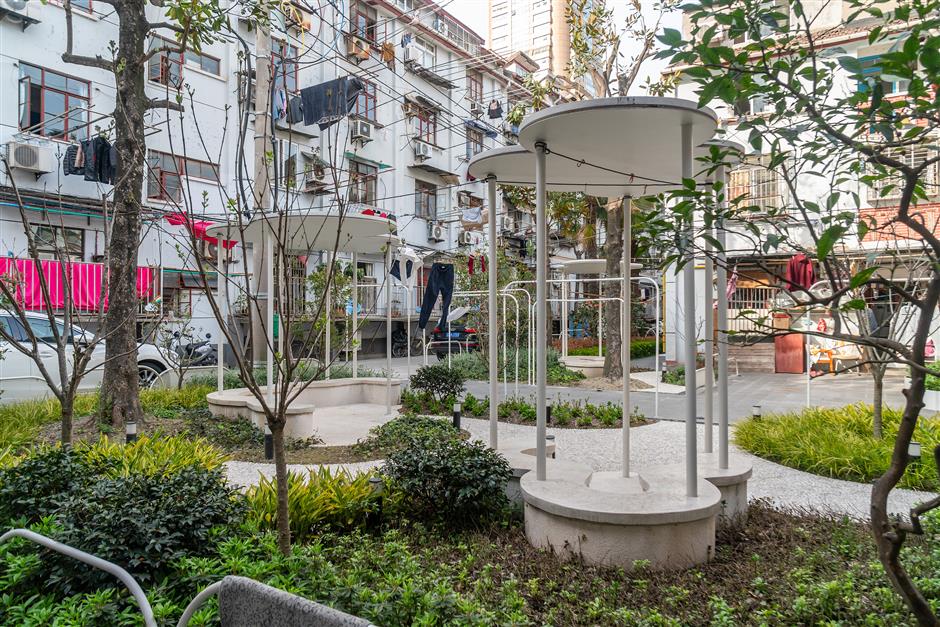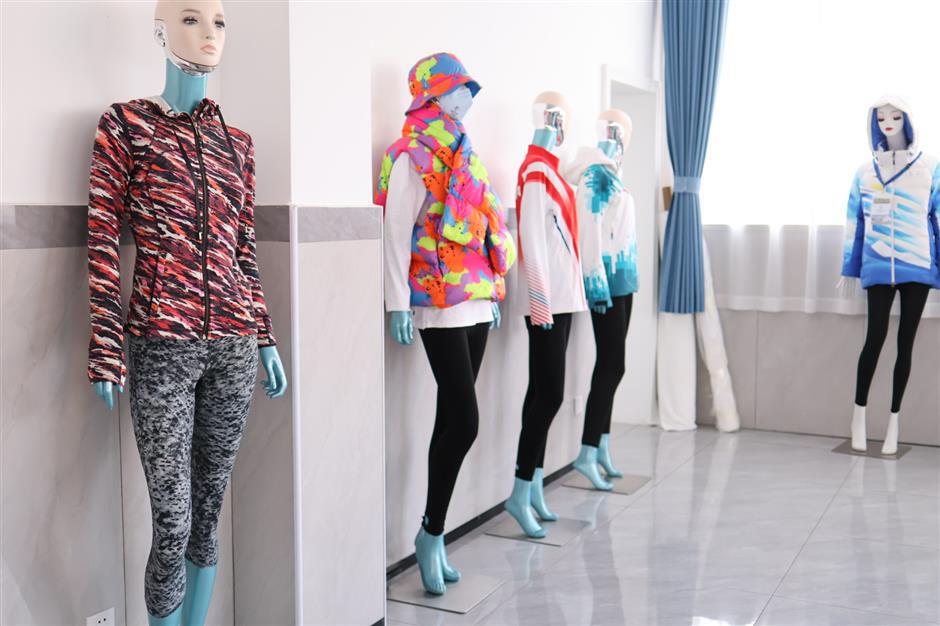
A display of digitally printed activewear and outerwear at Qianyong Textile's showroom in Keqiao. The company's breakthrough in high-definition, low-waste printing marks a new chapter for the region's textile industry.
At the Qianyong Textile showroom in the Zhejiang Province city of Keqiao, bolts of fabric in neon oranges, moss greens and icy blues are stacked against the wall, and mannequins wear Olympic ski jackets, Lululemon yoga sets and sleek Canada Goose shells.
Xiao Xingshui, owner of the company, surveys the merchandise with a sense of job well done.
"We're creating things that didn't exist here before," he said. "This industry is no longer just about weaving and dyeing. It's about new momentum, new equipment, new processes and new technology."

An Olympic uniform made with Qianyong Textile's digitally printed fabric
Xiao is the modern face of a green revolution in the fabric industry – a volte-face from a decade ago, when he was just another middleman in Keqiao's fabric trade, haggling over prices in a market stall. At the time, every meter of dyed fabric required 13 kilograms of water and earned eight cents.
Convinced that the industry was on a dead end path, he used his savings to rent a workshop, imported digital printing technology and started the company on a bet that higher-value, greener fabrics would be the future.
He spent years adjusting software settings, testing inks and fixing every flaw one by one.
"The first sample we printed was dark and blurry," Xiao recalled. "But the whole workshop cheered because we'd never seen anything like it before in Keqiao."
Each round of testing made the prints sharper, the colors richer and the images more stable.
Today, Qianyong's digital printing consumes only about a 10th of the water used in traditional dyeing and cuts wastewater discharge by nearly 90 percent. Its fabrics have found their way into collections by Lululemon, Anta and Nike, as well as uniforms for the Beijing and Paris Olympics.
'The city built on cloth'
Xiao's gamble reflects a titanic shift that has reshaped Keqiao, long known as "the city built on cloth."
For years, that reputation rested on sheer output and heavy-polluting processes. A mix of government environmental policies, changing consumer trends and survival instincts nudged the industry toward cleaner production in a wave of sustainable upgrades.
The abundance of water that once fueled Keqiao's rise into a textile powerhouse had become a liability by 2010. Scattered dyeing factories, often tucked behind homes or flanking irrigation canals, polluted waterways and emitted chemical fumes.
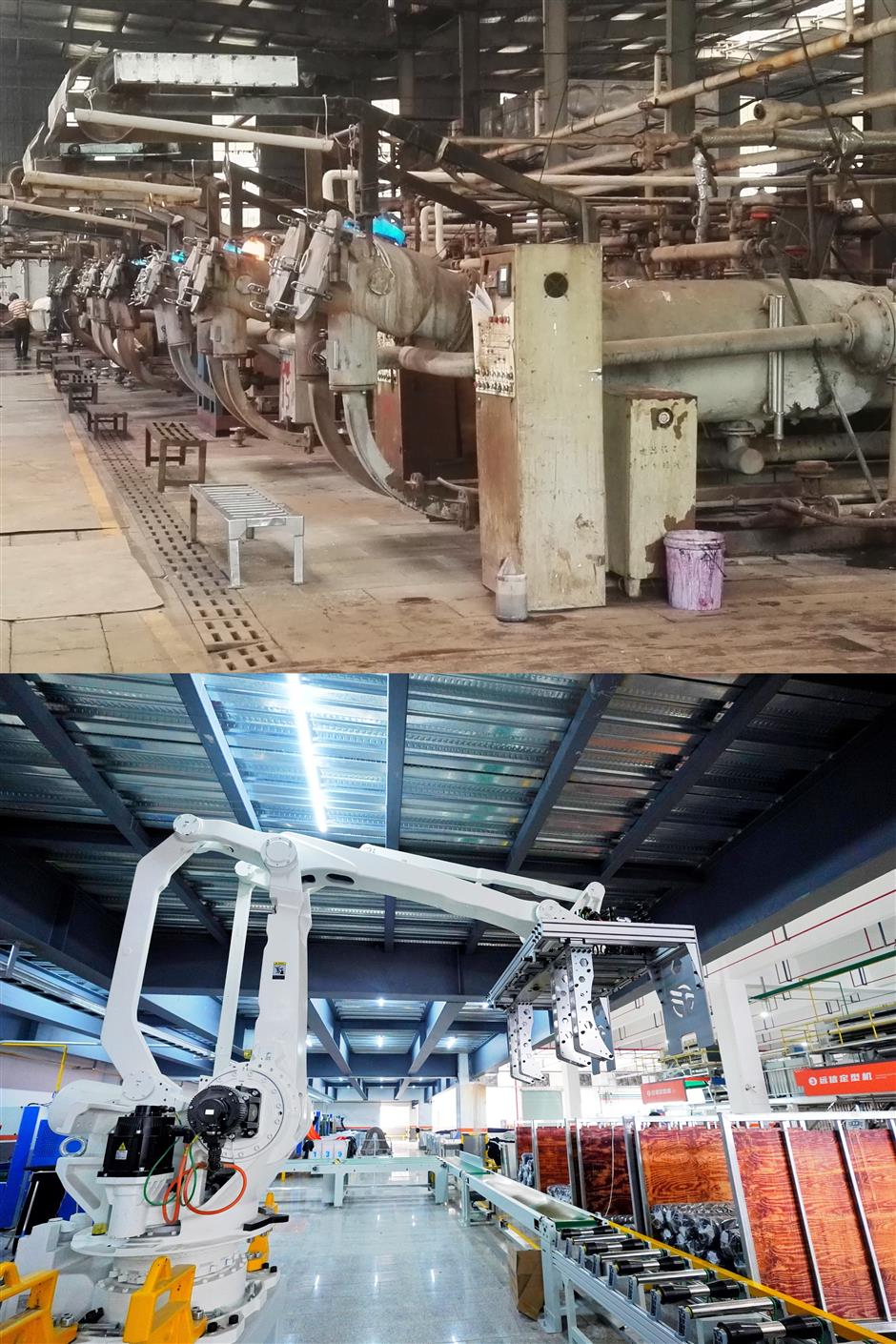
A before-and-after look at Keqiao's textile production lines, where traditional heavy machinery is giving way to automated, cleaner technology.
Shutting down the industry wasn't an option. Keqiao is home to 8,000 textile manufacturers, nearly 900 of them on a large scale. The full supply chain runs through city, from synthetic fibers and weaving to dyeing and finishing. In 2024, the textile sector accounted for more than half of Keqiao's total industrial output, with printing and dyeing alone valued at over 65 billion yuan (US$9 billion).
If the industry was shuttered, how would locals make a living?
To upgrade the industry and clean up the environment, the government rolled out a plan to move the entire dyeing sector to a new industrial zone outside the city, equipped with centralized wastewater treatment and steam supply.
It was a brutal shake-up for the industry. Of the 200-plus dyeing plants once operating in Keqiao's core, only about 110 made it through to the zone. The rest merged, relocated, or disappeared.
A brutal transition
"It wasn't exactly voluntary," Wang Hao, director of the district's Modern Textile Industry Service Center, said of the transition. "But in hindsight, not moving would have cost more."
The seaside site picked for the new industrial zone was, at the time, a windswept patch of tidal flats knee-deep in reeds and tall weeds. Many factory owners were reluctant to move. It was far from town, and the costs and logistics of moving weren't trivial.
But as environmental rules tightened and inspections grew more frequent, the equation began to change. The cost of running independent wastewater systems and handling steam and chemical fumes on an individual basis started to add up. In the new park, waste was treated centrally. Energy came in bulk.
"You begin to realize that it's not about saving money today," Wang said. "It's about still having a business tomorrow."
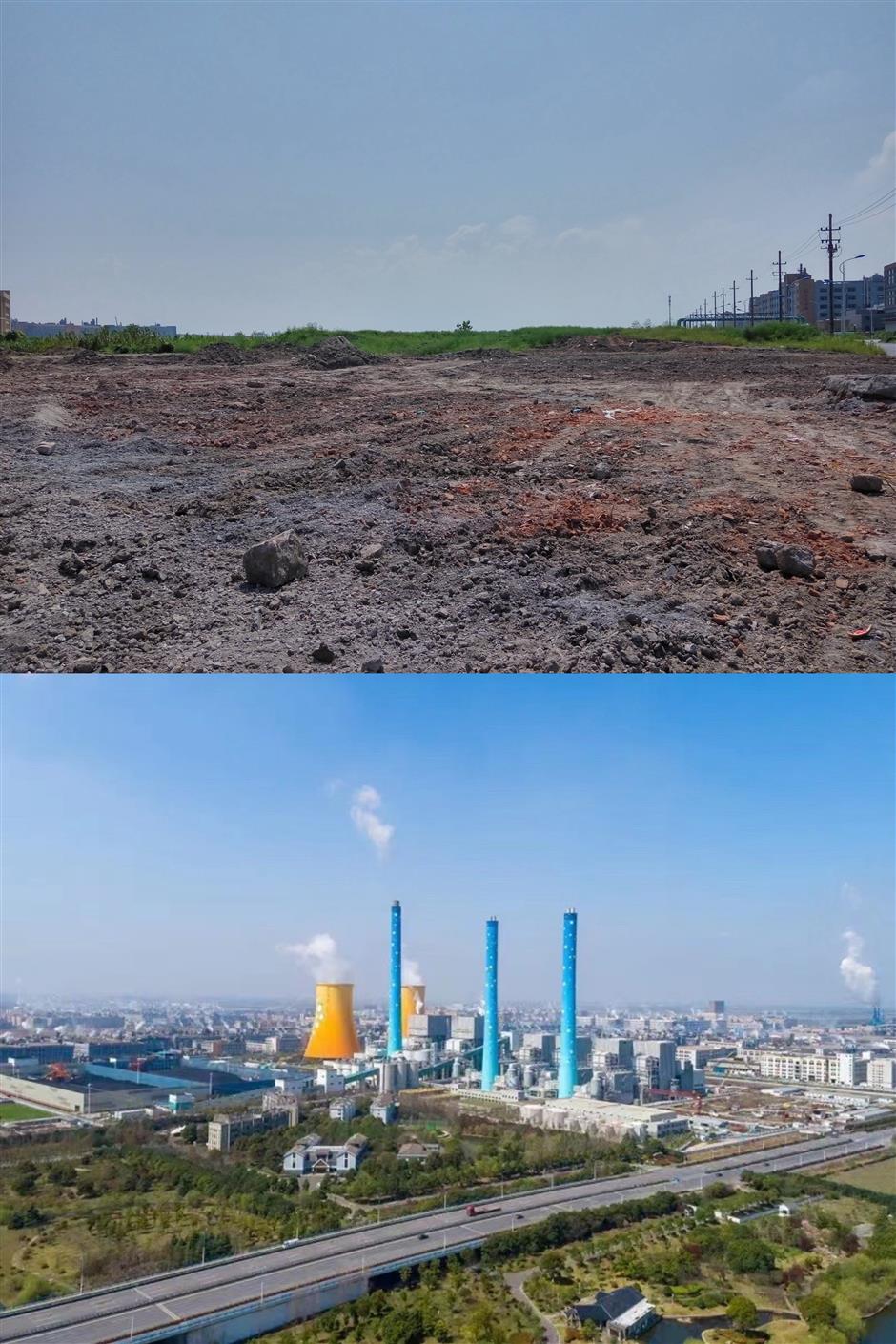
A site transformed: What was once a barren field is now the location of a modern textile industrial zone, part of Keqiao's push to rebuild its industry from the ground up.
Today, the zone runs on shared steam, centralized wastewater treatment and real-time monitoring systems. The result: cleaner skies, cleaner water and every meter of space occupied.
"Everyone wants in now," Wang said. "But the park is full."
Companies adapted in different ways. Some factories doubled down on greater efficiency. Others completely retooled their product lines. A few decided to bet on specialty textiles instead of bulk sales.
A fabric suitable for changing times
For Jinsheng Textile, innovation started with the question: What else could a suit be made of?
A "wild" idea bears fruit.
Huang Kaili, the company's executive vice president, recalls the day a supplier turned up at the door in 2015 with fabric made of bamboo. It was not the usual stiff weave but rather a softer strand extracted from bamboo pulp, promising natural breathability, odor control and a smaller carbon footprint.
"It felt a little wild at the time," Huang said. "But we tested everything."
Unlike cotton, which requires heavy irrigation, bamboo grows rampantly in China, with no need for fertilizer or replanting. It's naturally antibacterial, easy to maintain and deeply rooted in local supply chains and cultural symbolism.

A plush panda toy holding bamboo leaves sits among rolls of bamboo fiber fabrics, highlighting the eco-friendly and nature-inspired brand identity.
Jinsheng took a gamble. The research and development process was tough. Bamboo fibers snapped easily, and no one had tried to make formal wear out of the stuff. But after six months of trial and error, tinkering with blends, finishing techniques and color absorption, the team created what Huang described as "a fabric that breathes like cotton, drapes like wool, and wears like nothing else."
"One of our early partners, a high-end menswear brand, called our bamboo trousers 'the most comfortable dress pants' customers had ever worn," Huang said.

A showcase of finished garments made from bamboo fiber, including sleek shirts and tailored trousers – a blend of sustainability and fashion

A soft pastel-colored collection of suits, suggesting the diversity of color and texture bamboo textiles can achieve, moving beyond basic eco-wear to stylish, contemporary design
Unlike many Keqiao factories that wait for client samples to copy, Jinshen positioned itself as a fabric developer rather than a simple processor. The bamboo gambit paid off.
Today, bamboo-derived fabrics account for a quarter of Jinsheng's exports, especially to Europe and Southeast Asia. To sell in Europe, the company obtained standards certification, which required creating systems to verify water use and material inputs.
"Five years ago, hardly anyone in China asked about sustainability. Now, even domestic brands want to know if a fabric is green," Huang said. "Sustainability used to be a selling point. Now it's just the cost of entry."
Other companies in Keqiao eyed opportunities in other market sectors.
Green car interiors
Meisheng New Material now supplies plush faux suede for car interiors to more than 20 automakers, from Tesla and BYD to several European brands. Its products meet a 700-hour light-fastness standard and come in dozens of colors, matching Italian imports in quality while offering a cleaner supply chain.
That success comes on the back of a surge in Chinese sales of electric vehicles, both at home and abroad.
"When Chinese brands go global, their suppliers go with them," said Qian Guochun, general manager of Meisheng. "Electric vehicle makers want interiors that look premium but feel modern and sustainable. That shift opened doors for us."

Prototype high-end car seats covered with synthetic leather. Made with eco-friendly materials, the seats are part of Meisheng's effort to combine luxury comfort with sustainable design.
Meisheng didn't start at the top. For years, it produced low-end faux suede for shoes and bags, eking out razor-thin margins in a crowded market.
"We were making goods that sold for 10 yuan a meter and fighting over pennies," Qian said. "Every order felt like a price war."
When he first saw imported faux suede for car interiors, he was stunned by both the texture and the price tag of nearly 600 yuan a meter.
In 2015, Qian decided to take the company upmarket. Developing automotive-grade suede meant starting almost from scratch. Light-fastness and aging tests lasted months, and obtaining carmaker orders could drag on for years.
"More than once, we thought of quitting," Qian said. "We kept the lights on with bulk low-end orders while throwing money at the high-end line."
After four years of fine-tuning in bonding strength, color stability and texture, the company finally had a product that could pass global quality tests. At the same time, it switched to water-based and solvent-free polyurethane technologies, sharply cutting emissions and slotting its product into European environmental standards.
"Performance matters, but without a green label, you can't even enter the conversation," Qian said.

A camouflage-textured steering wheel wrapped in eco-friendly fabric. Meisheng experiments with bold aesthetics and circular material use in high-end vehicle interiors.

Roof panels designed for automotive interiors. Compliant with green production codes, Meisheng's headliners contribute to both comfort and carbon reduction.
Meisheng's faux suede now holds about 20 percent of the automotive interior market, far ahead of other synthetic leathers, like pseudo cowhide or deerskin. With the rise of electric vehicles and a consumer trend away from leather, Meisheng found itself in the right place at the right time.
"Ten years ago, leather was seen as luxury," Qian said. "Now buyers want lighter, greener, and more versatile materials, and that's where we've built our advantage."
Looking ahead, Qian sees opportunities beyond cars. The same technology, he said, could be used in yacht seats or even aircraft cabins.
"We've proven we can compete in cars," he said. "Now we're thinking bigger."














